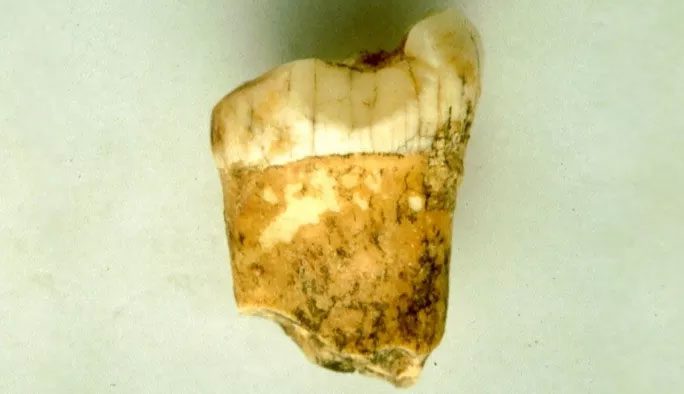A tooth resembling that of modern humans has revealed insights about a creature that was at the top of the food chain on continents hundreds of thousands of years ago, one that even ancient mammoths and giant rhinos feared.
According to Science Alert, a team of scientists led by Dr. Klervia Jaoen from the French National Centre for Scientific Research (CNRS) analyzed zinc isotopes from a rare archaeological treasure: A rare intact tooth from Neanderthals, our extinct relatives, excavated from Gabasa, Spain.
Neanderthals, who existed on Earth approximately 800,000 to over 30,000 years ago, are closely related to modern humans, Homo sapiens. They frequently interbred with our ancestors, leaving a genetic legacy in many people, especially Europeans.

The Neanderthal tooth revealed the truth that they were at the top of the food chain, causing even mammoths to be fearful – (Photo: Lourdes Montes).
There is much debate surrounding this species. There is indirect evidence suggesting they were professional hunters, but some studies indicate their diet was quite similar to ours.
To provide a precise answer, researchers analyzed nitrogen isotopes from the collagen in an ancient Neanderthal molar. The ratio of nitrogen-14 to nitrogen-15 isotopes reveals the truth. A higher nitrogen-15 level indicates a primarily carnivorous diet; however, some plant species with high nitrogen-15 levels in certain regions of the Earth could skew the results.
Therefore, Dr. Jaoen and her colleagues focused on zinc in the tooth enamel. The low levels of zinc-66 isotopes in the mysterious Neanderthal tooth revealed a chilling truth: It was undoubtedly a high-level carnivore.
The tooth also indicated that this ancient individual was weaned at about 2.5 years old and subsequently consumed a significant amount of meat. They also ate plants, but not as omnivores like us; rather, they were something in between carnivores and omnivores, primarily leaning towards a carnivorous diet due to the minimal plant content in their diet.
Previous archaeological evidence has also revealed indirect signs at Neanderthal sites: Animal bones showing signs of being butchered for meat, not those that died naturally, including bones from some of the most dangerous beasts like mammoths and giant woolly rhinos, which are now extinct.
The new discovery from the zinc in Neanderthal teeth supports this hypothesis, suggesting they were likely at the top of the food chain. In the Gabasa area, where the tooth was found, Neanderthals also had the lowest zinc-66 isotope ratio among all animals, which may indicate they were the most carnivorous species.
Although their meat-rich diet is believed to have significantly contributed to brain development—Neanderthals had larger brains than ours, despite being inferior in some evolutionary traits and highly skilled in tool-making and jewelry crafting—it may also relate to their extinction.
A diverse diet that included fish and plants might have been a prerequisite for Homo sapiens to survive the harsh climate periods and the gradual scarcity of large animals, allowing us to become the only surviving species of the genus Homo, which once had 8-9 species when our species emerged.
This research has been published in the scientific journal PNAS.

















































